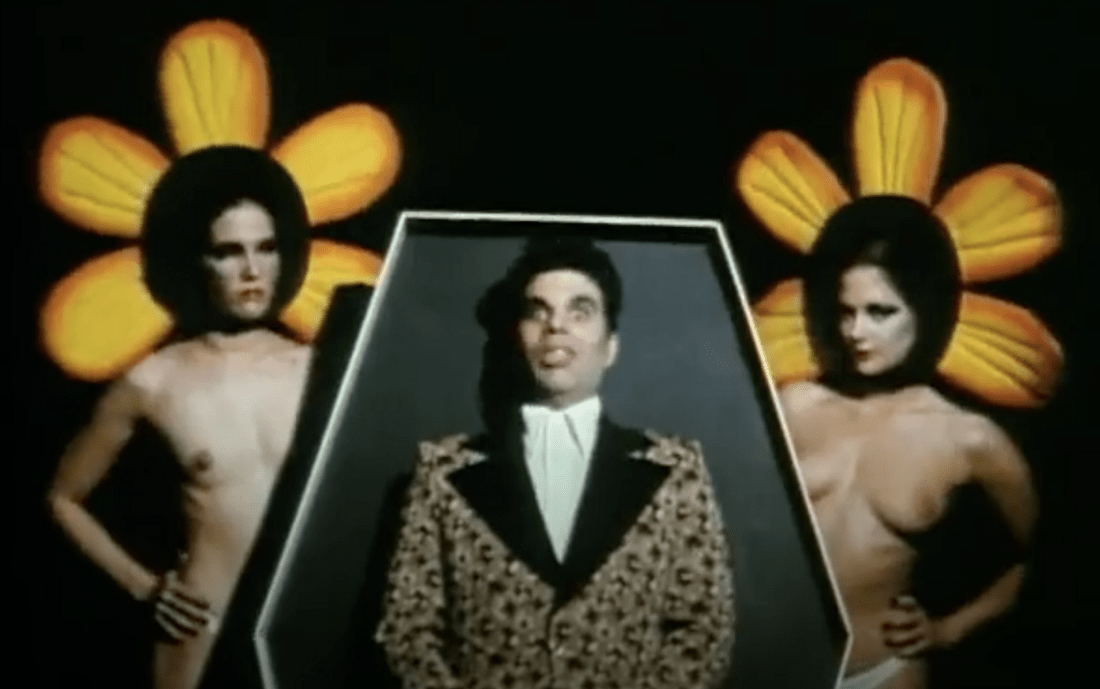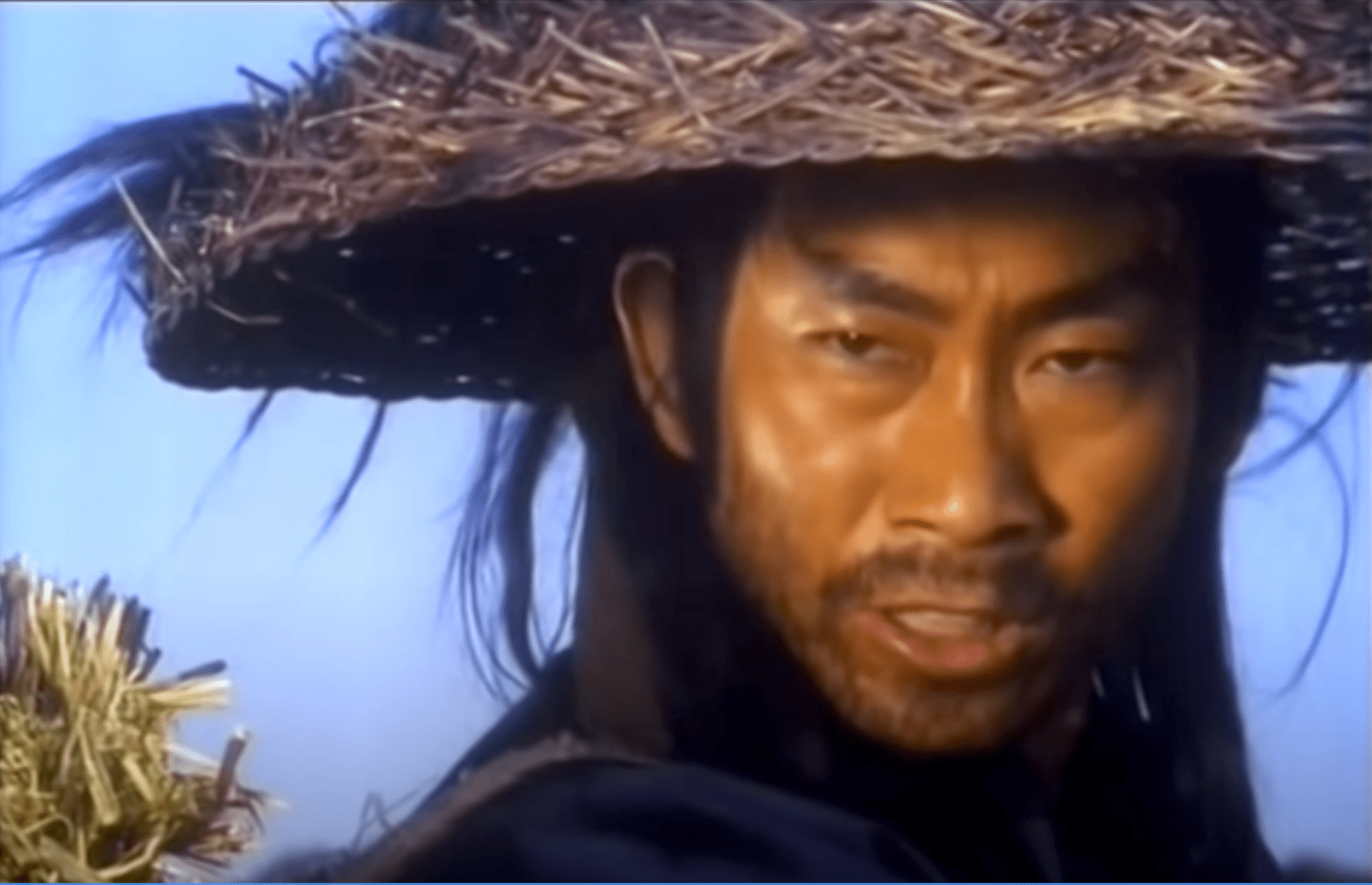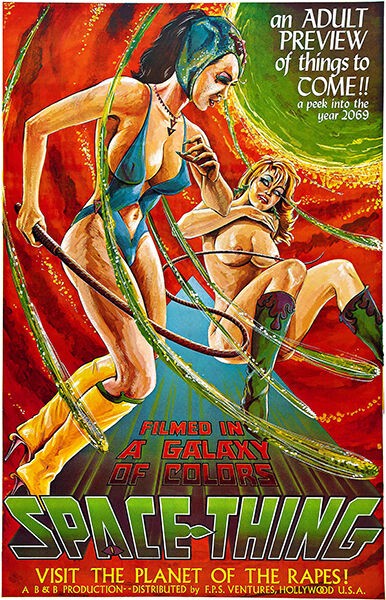
The Colossus Of New York has higher ambitions than just your average science fiction B movie. It takes on a wide range of different issues and arguments and sets most of them up as polemics in urgent need of a solution. The central theme concerns a brain that has been separated from its body. This becomes an opportunity to address the divide or lack of divide between the mind and the body. In consciousness studies, this split is referred to as “the hard problem.” The hard problem can be construed a few different ways but it always revolves around the joining of what is material with what is intangible. How does an arrangement of molecules give rise to thoughts, or how do non-material things like thoughts cause material things like our bodies to move, or what is the relationship between your brain and your mind.
In standard science fiction fare, these issues take a back seat to simple suspense and drama. An apt example would be The Brain That Wouldn’t Die, which was released around the same time as The Colossus Of New York in the late 1950s. Both movies centered around the mind-body split. The Brain That Wouldn’t Die a woman wakes up after a car accident to find she has been reduced to a head sitting in a tray a fluid in a lab. The film however does not use the premise to address the nature of what that means. Instead, the situation is simply used to create a creepy thriller where the venal head manages cunningly manipulate the people around her/it.
On the surface, The Colossus Of New York appears to be of the same genre and was even marketed to appear as such but The Colossus Of New York uses the genre as a means of folding together several layers of meaning. It borrows heavily from Mary Shelley’s Frankenstein. I specify Shelley’s Frankenstein because the film actually addresses the issues of hubris, science, reason, compassion, isolation, and the grotesque just as Shelly’s novel does. The Colossus Of New York does also reference the better known Boris Karloff image from Universal Studios, but even there, it goes much further. The Colossus Of New York ties all this together with a romantic love triangle, as well as the obligatory 1950s anti-communist rhetoric.

Although The Colossus Of New York takes on all these complex issues it was still a mainstream Paramount production from the 50s, and as a result, the science, ideology, and dialogue betray a limited and dated point of view. Part of the reason the film ends up dated has to do with its approach. The film takes itself and its message very seriously and is so focused on being analytical that it neglects character development. One of the ways earlier writers like Shakespeare or Shelley continue to stay relevant is that they focus on their characters. By emphasizing the human experience their works survive changing trends and cultures. The world of 15th century Denmark does not resemble our 21st-century world but Hamlet still resembles us, and we recognize and identify with him. Situations change but emotions do not.
The film’s bias toward an intellectual presentation and its neglect of the emotional development of its characters illustrates one of the flaws in its message. In a stereotypically male fashion, the film presents humanity’s value as residing in our ability to reason. It relegates emotions to pesky distractions to be avoided. This is actually a way of recapitulating the separation of the mind from the body by labeling the emotions as base and primitive in opposition to the executive functioning of the cortex.
Ultimately the film is trying to advocate for a kind of spiritual humanism. Men (intentionally exclusive) are to be celebrated for their ability to reason but must share their glory with god. In the film, a famous and invaluable scientist named Jeremy Spensser falls victim to a random accident. His father Dr. Spensser is able to remove the brain of his son and place it in a robot. The experiment is kept secret and the following dialogue takes place just after Jeremy’s funeral. It is between Dr. Spensser, Jeremy’s father, and a minor character named Dr. Carrington. Dr. Spensser begins, “You can find a profound meaning after such a shocking and stupid accident? Look, the brain of a genius has been obliterated because of one fragile bone in the fabric of his body. You can find a meaning to that?”
Dr. Spensser takes an existentialist stance. At the height of the cold war, such a stance was very often equated with communism. To reject god was seen as a rejection of America and of democracy. Never mind what the First Amendment says. This is the time when “under God” was inserted into the pledge of allegiance, and “In God, We Trust” was put back on the American dollar bill.
Dr. Carrington attempts to answers back “Doctor, there must be something,” but he is interrupted by the agitated and strident Dr. Spensser who continues, “Look, I’ll give you a meaning and I’ll give you an ugly one. In these desperate times of world crisis, we have been deprived of true genius.”
This too is a criticism of communism. The radical equality of communist society was seen as a threat to the rise of the exceptional visionary. America loves its independent, rugged, self-made men. We never tire of the singular hero.
Dr. Carrington rebuts, “I agree but always in critical times nature seems to provide us with several men of genius.” This statement begins to develop the idea of the cannon. It sets up the discussion to reinforce the white, male genius as the true source of all that is good. Dr. Spencer completes this gesture in his response,“‘Nature’ what errant drivel. Look don’t you realize that Jeremy’s brain was unique, and it was like Darwin’s, Michelangelo, like Da Vinci, like Einstein. Now suppose all those great brains had been allowed to continue their work unhampered by their bodies. Think of the advances in civilization they would make.
The canon is established, and the groundwork for addressing the mind-body split is being laid. For Dr. Spencer, these men are valuable for their minds, separate and apart from their bodies. But Dr. Carrington disagrees, “No no, no I believe that every man, that includes every great man, is the product of his mind and body. It’s through the divine spark of the creator that the interconnection of body and mind is achieved through the soul.
This last statement is pure Descartes. It sounds almost word for word like the end of Descartes’ Meditations. Man’s brain is awesome in its power, but it requires god to bridge the gap between the tangible world of blood and bone to the ethereal world of thoughts and ideas.
These issues are all the same ingredients present in Shelly’s Frankenstein. Just as 20th century America worried over losing god to modernity, so did early 19th Century Mary Shelley worry about science unmooring itself from the spiritual and the human. In addition, Jeremy, like Frankenstein pays an emotional toll for his unique physical condition. They both illustrate how the rational and the emotional can not be severed. They exist with their ability to reason intact but their emotional side is tortured by a sense of isolation and loss. They are unable to make physical contact with other humans leaving them feeling like outcasts. This could also be seen in spiritual terms as two men who pay a personal price for leaving the spiritual behind. Frankenstein and Jeremy are portraits of the modern man, soulless, lonely, and driven mad by lack of purpose or meaning.

The polemic set up between the spiritual and the profane however flawed sets up the next polemic between the mental and material. There is a myriad of mental exercises in conciseness studies that begin with the words “imagine you are a brain floating in a vat of fluid in a lab.” The Colossus Of New York goes right ahead and sets this exact scenario up for us to examine. The production design in the film is mostly lackluster but the brain in the vat of fluid being in gently caressed by bubbles and connected to dozens of thin wires creates an evocative and resonant image.

The above image of Jeremy’s brother regarding Jeremy’s brain is like the famous image of Darwin regarding a chimpanzee. Science continually demotes us. Copernicus told us we were no longer the center of the universe. Darwin told us we were no longer God’s special creation but just another animal, and Freud told us we were a sick animal.
The field of consciousness studies is a collection of different problems. There is the hard problem, but there is also the problem of other minds, the zombie problem, and the qualia problem. Each problem is an attempt to understand the origin and nature of consciousness. Along with all these questions are psychological questions about identity. Most people prefer the idea of “having” a body over “being a body.” We do not want to see ourselves reduced to a material existence where our thoughts, feelings, and experiences are nothing more than neurological phenomena resulting from electrical impulses and hormones.
The film takes a stand against this loss of status and wishes to return to the old Christian hierarchy where humans are second only to angels and to god. It wishes to reconcile science and god, in an effort that continues to this day. There are indeed scientists who believe in God but no matter what they say their belief in God is essentially incompatible with science. They can believe in God in their personal life, but they must check such fantasies at the door of the laboratory. In testing the covid vaccine you can not include god’s will as one of the possible variables. You can not consider that the placebo failed or succeed because god exerted influence, he has to be discounted.
The second half of the film strays from the scientific and focuses more on the dynamics of a love triangle between Jeremy’s wife, Jeremy’s brother (who is wooing her), and Jeremy, or what is left of Jeremy. The tone becomes a little more gothic and so does the filming. There are long shadows, flowing nightgowns, and heavy footsteps in the dark. Most of it feels a little out of place but the sound design is interesting. The robot body makes horrible noises. It hums and buzzes like a bad guitar amp but it also emits loads of snaps and electrical crackles that increase with Jeremy’s agitation. His voice is full of static and lacks lower register tones. It may just be the most frightening aspect of the film. It reminded me of Jacques Tourneur’s Curse Of The Demon, where the demon’s sonic qualities were far scarier than his appearance.
During an exchange between Dr. Spensser and his son Jeremy, we are given several different points of view including Jeremy’s fuzzy, static-filled, view of the world. We are clearly meant to sympathize with him but he is slowly driven mad by his condition and so ushers in the last ideological polemic that of Nietzschean-inspired fascism vs egalitarian democracy.

Jeremy is fed up with being a scientist and trying to make a contribution to human history. He doesn’t care anymore about disease or famine. He develops a hatred for humanity with all its folly and foibles and vows to destroy the weak. This last message about the dangers of tyranny culminates in the final scene when Jeremy gathers the world’s representative at The United Nations and stands before them on a balcony. Behind him carved in stone is an ironic quote from Isaiah in the Bible “They shall beat their swords into plowshares. And their spears into pruning hooks nation shall not lift up sword against nation, Neither shall they learn war any more.” As soon as the crowd is gathered he begins shooting rays out of his eyes and murdering everyone.

The Colossus Of New York covers a lot of ground, or at least it broaches a lot of ground. There was no Daniel Dennette or consciousness studies back in 1958. The film was based on a short story by Willis Goldbeck and directed by Eugène Lourié. Lourié had quite a colorful life and career. He was born in Ukraine and made his way to France via Istanbul. In France he worked with Jean Renoir on La Grande illusion and La Règle du Jeu. When he came to America he ended up making mostly science fiction films including the simply awful Gor.
The Colossus Of New York belongs with films like The Incredible Shrinking Man, where the typical tropes of science fiction are used to support deeper themes and address more complex issues. The way they address them is not profoundly sophisticated but it is the ambition to work with them that enriches the film.

If you enjoyed this article click here for more
www.filmofileshideout.com/archives/frank-packards-abar-the-first-black-superman



